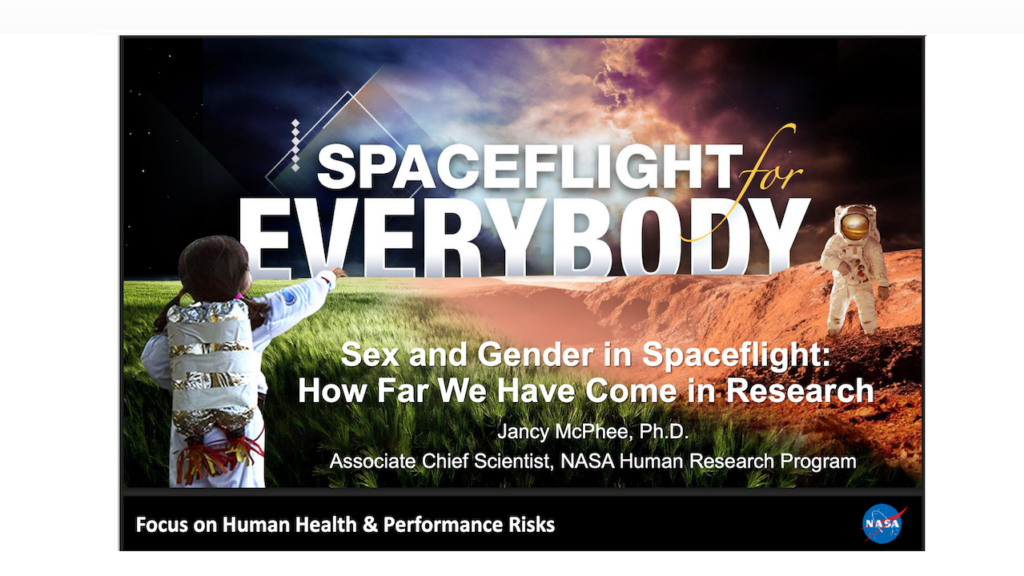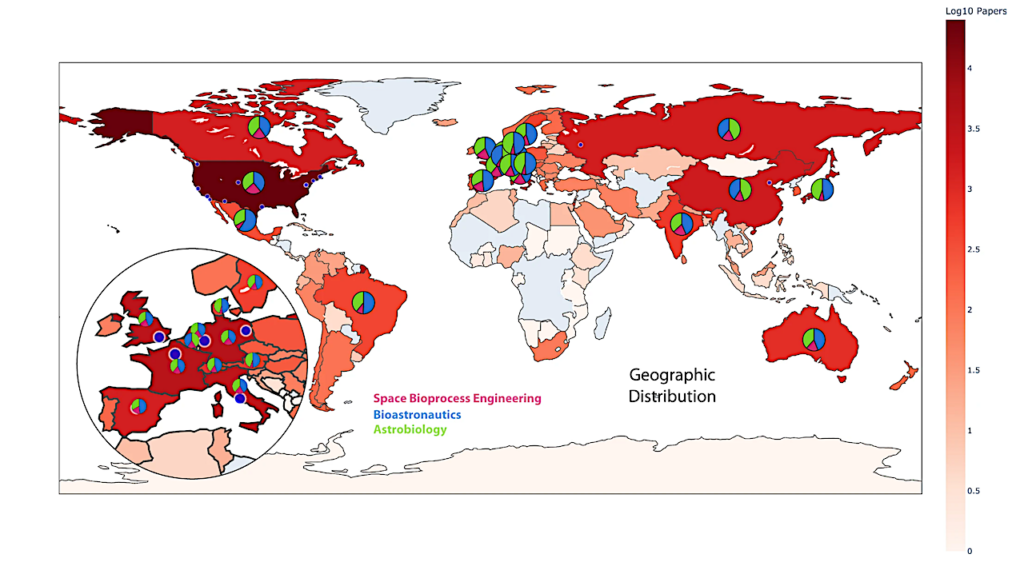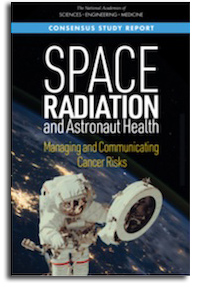Keith’s note: According to “NIH cancels its first and largest study centered on women“ in Science magazine: “President Donald Trump’s administration appears to be killing much, if not all, of a historic initiative that was the first, and is still the largest, National Institutes of Health (NIH) effort centered on the health needs of women.” To its credit NASA (often with NIH) has looked at physiology factors that differentially affect female vs male astronauts. Will new government rules bring that to a halt? NASA presentation.
(more…)“The integration of biology and spacefaring has led to the development of three interrelated fields: Astrobiology, Bioastronautics, and Space Bioprocess Engineering. Astrobiology is concerned with the study of the origin, evolution, distribution, and future of life in the universe, while Bioastronautics focuses on the effects of spaceflight on biological systems, including human physiology and psychology. Space Bioprocess Engineering, on the other hand, deals with the design, deployment, and management of biotechnology for human exploration. This paper highlights the unique contributions of each field and outlines opportunities for biologists to engage in these exciting avenues of research. By providing a clear overview of the major fields of biology and spacefaring, this paper serves as a valuable resource for scientists and researchers interested in exploring the integration of these disciplines.” More here: “Astrobiology, Bioastronautics, And Space Bioprocess Engineering: Domains Of Life Sciences In Spacefaring: What, Where, And How To Get Involved“
(more…)Keith’s note: I just did an interview on Alhurra TV and talked about space radiation research on astronauts and its applicability to medical treatments on Earth. I actually said “spinoff” several times. If you listen to the audio you will hear that I had a two-way English/Arabic interpreter. I worked as a professional Sign language interpreter for a number of years – so I know how to de-jargonize things and parse my comments to facilitate translation. Add in the fact that the program is aimed at a general global audience with no background in NASAese and there you are. That said – I had no talking points in advance from NASA or anyone else – and only a general idea of what might be asked. Having had a real job once upon a time working in NASA space life sciences certainly helped. Alas, these days, NASA Public Affairs takes little interest in providing media who get in front of large global audiences (such as Alhurra, BBC etc.) with relevant talking points to help make the discussion more relevant. And when a non-NASA talking head gets something wrong then PAO gets upset and has meetings and complains within itself about the quality of space news coverage. Oh yes: an arabic-speaking astronaut is living on ISS and another is heading up soon. I mentioned them too. A little soft power projection – not that NASA OIIR cares. At this point if they are reading this they are rolling their eyes. Just sayin. Here’s the audio.
(more…)Report: NASA Should Update Astronaut Radiation Exposure Limits, Improve Communication of Cancer Risks “The report recommends that NASA proceed with its proposed single standard dose limit for all astronauts, which is based on “risk of exposure-induced death” (REID) calculations for a 35-year-old female (who is considered most susceptible to radiation-induced cancer risk). Currently, men and women astronauts have different allowable doses of radiation, based on their reported relative susceptibilities to […]
Larger image First Reported Occurrence And Treatment Of Spaceflight Medical Risk On ISS, LSU “Ultrasound examinations of the astronauts’ internal jugular veins were performed at scheduled times in different positions during the mission. Results of the ultrasound performed about two months into the mission revealed a suspected obstructive left internal jugular venous thrombosis (blood clot) in one astronaut. The astronaut, guided in real time and interpreted by two independent radiologists […]
Review of NASA’s Evidence Reports on Human Health Risks 2017 Letter Report (2018), NAS “The evidence reports reviewed in this National Academies’ report are part of a larger roadmap process developed and under implementation by NASA’s Human Research Program. The goals of the program are to investigate and mitigate “the highest risks to human health and performance, providing essential countermeasures and technologies for human space exploration”. The evidence reports are […]
Scientists discover enzyme that could slow part of the aging process in astronauts — and the elderly, FASEB Journal “New research published online in the FASEB Journal suggests that a specific enzyme, called 5-lipoxygenase, plays a key role in cell death induced by microgravity environments, and that inhibiting this enzyme will likely help prevent or lessen the severity of immune problems in astronauts caused by spaceflight. Additionally, since space conditions […]






